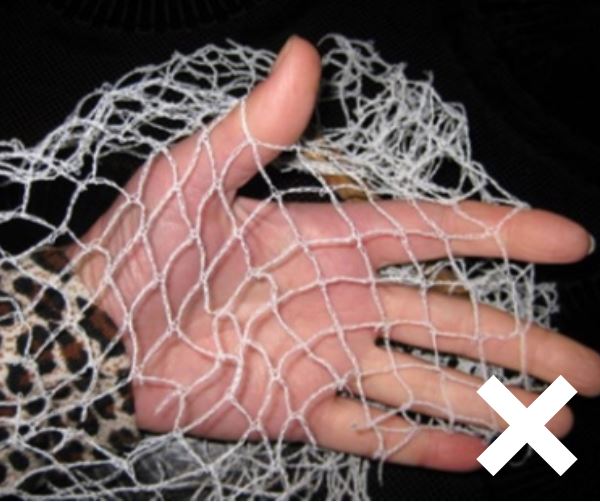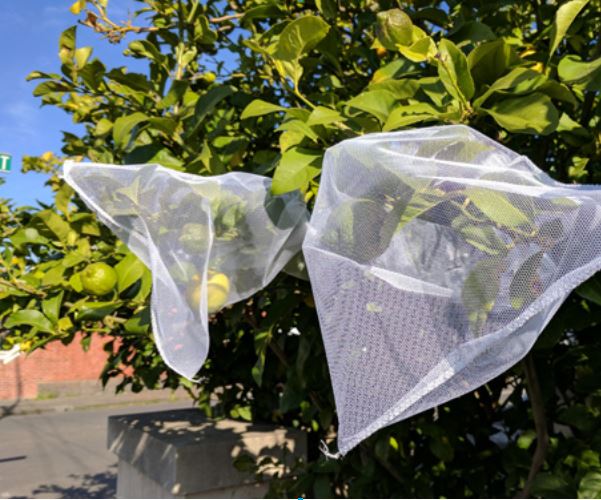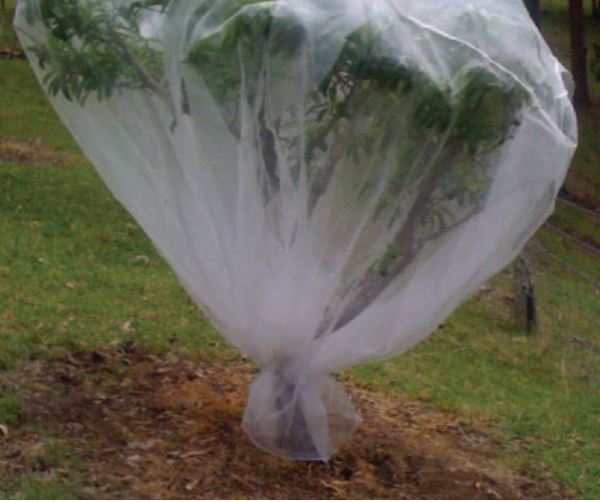Use of fruit netting – harvest without harm
Household fruit netting regulations
Netting used to protect household fruit-trees, vegetable gardens, or other fruiting plants must have a mesh size, of 5 mm x 5 mm or less at full stretch.
If you use netting to protect your household fruit or vegetable harvest you will need to comply with this new mandatory requirement introduced under Victoria’s Prevention of Cruelty to Animals Regulations 2019 (POCTA Regulations).
Any existing household fruit netting that does not meet this specification must be replaced with appropriate netting.
Don’t forget that old netting, when discarded, can still be an entanglement risk. If you plan to dispose of old netting to landfill it is recommended that you place it into a strong biodegradable bag first.
The regulation applies to both the sale and use of household fruit netting. It does not apply to sale or use of netting in commercial circumstances.
Failure to comply with this regulation could result in a fine under the POCTA Regulations. The maximum penalty for using fruit netting that does not comply or for advertising or offering non-compliant netting for sale for household fruiting plants is 15 penalty units.
Infringements of 2 penalty units and 4 penalty units can also be issued for use, or sale, of non-compliant netting, respectively. Find out the current value of a penalty unit.
Why has the regulation been introduced?
Fruit on household trees and plants is a tempting treat for hungry wildlife. Netting is a popular way to protect fruit, but inappropriate types of netting can kill or injure animals such as birds, possums or flying foxes.
Netting with a large mesh size is more likely to entangle animals and their struggling can cause deep cuts and strangulation, often leading to death.
Reducing the mesh size of netting will greatly reduce the risk of animal entanglement.
What type of netting should be used?
Netting used on household fruiting trees or plants must have a mesh size of 5mm x 5mm or less at full stretch.
It is also recommended that household netting is:
- white in colour, making it easier for nocturnally active animals to see and avoid it at night
- made from material with a strand diameter thicker than 500 microns, or with a cross-weave design, to also help reduce injuries and fatalities.
The use of appropriate mesh sized netting will support a productive harvest while also protecting our vulnerable wildlife from harm.


It can be easier to protect selected branches rather than netting the whole tree. A range of bags, sleeves and socks are available to protect fruit on individual branches.
How to use netting
When netting the whole tree:
- Pull netting tightly over the tree. Don’t throw netting loosely over trees or allow netting to lie across the ground, where it can entangle reptiles and other animals
- Fix netting tightly to the tree trunk – this will stop rats and birds from reaching fruit.

What is meant by household netting?
The following guidance has been developed to assist Victorian gardeners and retailers to understand what is generally meant by the use of the term ‘household’ in this context.
Generally, ‘household’ fruit-trees, vegetable gardens, or other fruiting plants are those grown:
- at residential premises in an urban or suburban area, or
- at residential premises in a semi-rural or rural area, primarily for personal use (even if some excess produce is shared or sold).
- at community or shared gardens where produce is grown primarily for personal or non-commercial use (even if some excess produce is shared or sold).
‘Household’ fruit-trees, vegetable gardens, or other fruiting plants would not generally include those grown:
- at commercial orchards, or
- at vineyards, or
- for a fruit and/or vegetable produce business, or
- where the objective of growing the trees or plants is to produce a commercial harvest for sale, with the intent to make a profit. The scale of such an activity should be consistent with other commercial orchard, vineyard or produce businesses.
The Australian Tax Office (ATO) provides information that will assist people to determine whether their fruit or vegetable growing activities are a hobby or a business. The ATO makes it clear that there is no single factor that determines if a person is in business.
Gardeners’ individual growing arrangements for fruit and vegetable produce will vary, and this guidance does not take into account personal situations. Where appropriate, you should seek independent professional advice.
Protecting wildlife
- Remove old netting that is not protecting fruit and dispose of safely. If the chosen method is disposal to landfill it is recommended that you place it into a strong biodegradable bag first.
- Check netted trees every day to ensure the nets are not loose and no animals are caught
- Wildlife in Victoria are protected under the Wildlife Act 1975, which makes it illegal to wilfully disturb or destroy wildlife.
Helping injured wildlife
Getting help quickly is critical for wildlife that has been caught in netting. If wildlife is entangled in netting, do not try to handle or rescue the animal. Call a wildlife rescue group to come and safely remove the animal.
Some wildlife, especially flying foxes or snakes, carry diseases or may be dangerous. If someone is bitten or scratched by a flying fox, contact a doctor immediately. Flying foxes can carry Lyssavirus which can be fatal if contracted by humans.
Contact
Visit Wildlife Victoria to find contact details of wildlife rehabilitation organisations.
Wildlife Victoria 03 8400 7300
AWARE (24hrs) 0412 433 727
Photo credits
- Netting the whole tree, Lawrence Pope
- Netting individual branches, Lawrence Pope
- Example of compliant and non-compliant netting, Denise Wade